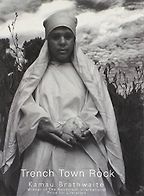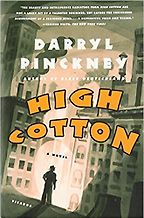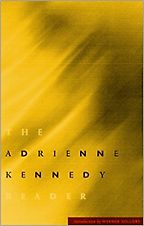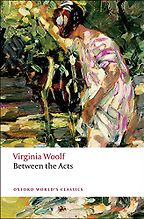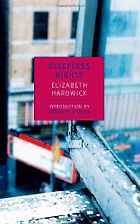How do you define ‘cultural memoir’?
For me, cultural memoir is a mutating definition. I first began to think in that way when I was working with the boundaries between criticism – literary, cultural, or whatever – which I had done for so many years, and memoir. I realised that I needed, in some way, to merge and to keep those two forms in dialogue, interrogating – as we like to say – each other. So, I began to think of cultural memoir. Initially I was just working obviously with non-fiction but, as you can see, fiction and theatre make their way in here, too.
So, I began to think of memoir as a form in which the very particular individual is dramatised, theatricalised, and fictionalised in some way – as we all know, memory is a form of fictionalising. A very particular self is at the centre, which is always seen not just against the background of, but intimately shaped by and responding to, this much larger cultural context which is historical, aesthetic, political, social… It is all of those things.
The individual character’s role and place in the narrative keep changing. At one point, the poem that she’s reading might matter more than her relationship with her parents, which is one of the traditional devices of revealing and exploring a character. They are representations of, and they embody always, a larger culture in history.
Is it fair to say it’s quite a compassionate form?
I would like to think that it is, yes, because it’s always challenging itself to expand – when it contracts, it has to expand in another direction – and to constantly keep multiple perspectives. You might say it’s more collage than portraiture and it’s polyphonic rather than monophonic.
Let’s talk about your first book: Trench Town Rock (1994) by Kamau Brathwaite. Tell us about Brathwaite – he is a towering figure in Caribbean literature and culture.
He is a poet, he is a theorist of language – he is extraordinarily accomplished and gifted in both those ways – and he is, in both in his poetry and in his critical writing, again, always putting this very particular individual voice and sensibility on a landscape of Caribbean history that is centuries long. Caribbean history obviously takes in European, North American, and South American history.
That also means that he is extraordinary at working and playing with all kinds of languages. There’s what he calls ‘nation language’ – the indigenous languages of the Caribbean – and the languages that emerged and evolved as Europeans settled the Caribbean. And I say languages, in the plural, because in addition to the African-based and Indian-based languages, there are variations on English, on French, on Spanish. So, all of these vernaculars – some of which then become formal languages – are there. He uses many of them as a poet and he certainly always takes them into account as a critic.
Trench Town Rock is itself a hybrid form. It’s a fusion of poetry and documentary or what Brathwaite calls ‘video style’.
Exactly. I actually first read a shortened form of it in one of John D’Agata’s essay collections, and, yes, it is taking this charged period of political, legal and illegal violence – murder, corruption etc., – going on in Jamaica at that time and documenting plus re-imaging it in various literary and media forms. He was based in what was Bob Marley’s neighbourhood.
Personal narrative opens out and becomes journalism, there are transcripts of radio interviews, and there is reportage. It’s extremely taut and dramatic, with robberies and murders and gunshots. It’s really almost like a noir novel. There’s poetry, too, and folklore, with Anansi the spider. There’s this other level of hybridity because he is there, he is living in this housing project with friends, but he is also an interrogator, a reporter, and he’s a reporting device at times. And then, at other times, he is the dominating voice and, of course, it’s all juxtaposed and collaged and montaged wildly.
The use of pop culture elements especially – say, Michael Jackson or Beyoncé, both of whom you’ve written about – to make much broader pronouncements about a particular time and place is a central trope of the cultural memoir.
Yes, because popular culture is part of our collective unconscious and consciousness; one way or another we are all embedded in popular culture. And it increases – it intensifies – as technology becomes more ubiquitous. We are all as embedded in forms of popular culture as we are in our homes or schools or whatever. Brathwaite is a wonderful example of that. He is also a high art poet, if you will, who is fully cognizant of several august traditions of poetry. So, certainly, as writers, we’re always trafficking in the more rarefied culture – art, literature… what we traditionally call ‘high culture’ – at the same time as we are trafficking in these increasingly multiplying forms of popular culture.
“Popular culture is part of our collective unconscious and consciousness; one way or another we are all embedded in it. And it increases – it intensifies – as technology becomes more ubiquitous”
This is not new, this is modernism as well as postmodernism. Their relationships to each other, how they inflect and alter each other, is absolutely critical and it’s very fertile material for a writer because it gives you multiple points of view, the way a piece of music with many harmonies and rhythms does. What’s new, I hope, is how the perspectives, the inflections, change.
Elizabeth Hardwick was a master of cultural detail, which – especially in her criticism – she tended to use as a kind of launch-pad. So tell us why her novel Sleepless Nights (1979) is on your list.
There are two novels on my list. In terms of literary form and history, one of the interesting things is that Hardwick called it a novel, it was published as a novel, and it is now being written about as a hybrid form – as an early and potent example of what we are now calling experimental, hybrid non-fiction.
Why do I think that’s fair? Because from the very beginning, even though she uses her own name, Elizabeth, and gives all kinds of details for those who know something about her life as a critic, and as a wife and widow of Robert Lowell etc. etc, she does so as a novelist – that is, she gives us all kinds of tantalising autobiographical detail but she refuses to privilege that life and those details above, let’s say, the stories of the women in the little hotels in New York in the 1950s, in those semi-genteel, semi-seedy little hotels she was living near; or Billie Holiday, whom she met and was entranced by as a young woman; or a rather difficult vain man who she’s known for years, who we have not seen at any other moment in the book. Suddenly, he appears and becomes the source of musings about ageing, about how men versus women age, about how a particular kind of man negotiates his way through the world of women.
So she resists traditional autobiographical means and details except simply to use them as just so many other colours on the palette. Even though Holiday is a legend, she doesn’t, in the landscape of the book, loom over what we might call the minor or bit players.
It felt quite revealing to me to learn that the working title of Sleepless Nights was ‘The Cost of Living’.
Yes, ‘The Cost of Living’: it’s the singular that implies the plural and goes quite beyond just the self as the constantly central figure. We all use that term to acknowledge our collective everyday struggle as human beings.
One of the other authors on your list – Darryl Pinckney – has just written the introduction to a hefty volume of Hardwick’s selected essays. He says this about her: “Her love of literature has in it a profound humility. There’s nothing cruel in her intelligence. You didn’t know the sceptical mind could be so graceful.”
Yes, I think that’s true – and I entirely agree with that – and yet, at the same time, the humility and the compassion in no way throws sweet clouds over a kind of ruthless precision that she also possesses towards herself and towards others. It’s never the only tone; ruthless precision is one tactic, if you will. And there can also be enormous precision without being ruthless. Is there such a thing as compassionate precision? Yes, there is.
Your third book is Pinckney’s own High Cotton (1992), a semi-autobiographical novel about growing up black and bourgeois in the 1960s. It’s another genre-straddler…
Again, I never want to snatch from a writer who has written a novel the right to claim that form. In both these cases – and also with Woolf – I am claiming simultaneity. So, High Cotton does work, with its own deliberately eccentric structure, as a Bildungsroman: the young man coming of age, finding himself, declaring himself, moving out of and resisting the world that he is supposed to not only know but accept.
“The novel has very deliberate fractures because he, the narrator, keeps intervening and cutting into – staging guerrilla raids on – the narrative”
But it keeps breaking out of that through, for example, the figure of the grandfather who represents a whole world – not the whole world – but the very particular world of the black south and the black bourgeoisie. Certainly, this goes back to the 19th century, but the grandfather’s consciousness goes back earlier than that, even. The grandfather carries an entire history; he wants to be that history; he wants to be a kind of omniscient narrator as well as the dominant character in the legacy of black history and he wants to impose that legacy on his grandson. So much of the book involves this pull that we talked about at the beginning – this push/pull and the strategies and almost guerrilla warfare as the young man is saying let me escape you, let me find my own language, let me mock you.
Get the weekly Five Books newsletter
One of the reasons that the novel has very deliberate fractures is because he, the narrator, keeps intervening and cutting into – again, staging guerrilla raids on – the narrative that the old people, the old country folks, including his parents, want to impose and live by and accept. So, he’s always veering off. In that way, you see a connection to Elizabeth Hardwick. He’s also veering off into the unexpected detail and the detail is often the obsession, the involvement, the excitement about some person or some cultural phenomenon that the world of the black bourgeoisie, or the world of the white bourgeoisie, would not want, or expect, him to claim.
You could position this book in a kind of Venn diagram with your own Negroland: A Memoir (2016) – there are significant overlaps. The main difference, I suppose, would be that Pinckney brings fiction to the fore in a way that you don’t. What does ‘fiction’ offer?
It allowed him to be free of the reader’s assumptions, which always affect the writer, about what is fictionalized and what is not. With any memoir, the reader is always there, questioning and watching, and the writer is always responding to that in one way another, even if by pre-emptive strike. It can be a very interesting thing to work with, but it is always there, and once you have entered the ‘house of fiction’ as E M Forster called it, you have thrown off those responsibilities and bounds. So, I think he had a lot of delicious room and he used it beautifully.
Let’s move on to your fourth book, The Adrienne Kennedy Reader. This is the first comprehensive collection of Kennedy’s most important works, plays, essays, and more. It begins in 1964 with Funnyhouse of a Negro. She was getting started in theatre around the same time you were getting started as a theatre critic, right?
She and Irene Fornes and Sam Shepherd – those charismatic off-Broadway figures – were starting out when I first beginning to worship theatre but I didn’t start writing until the 1970s. I was following her work, though, as an amateur from the 60s on. I was assembling my personal literary culture and she was crucial to it.
What was your first encounter with Kennedy’s work.
The first encounter was with her as a playwright rather than an essayist or a fiction writer. It was Funnyhouse of a Negro and I was mesmerised by the boldness of the language and form – it fractured time and space and layered conflicting narratives. As she said, “my plays are states of mind.” It was a play as a state of mind and it explored and exploded with revelations about black women and middle-class woman who longed to be artists. They were wracked by cultural constrictions and feverish imaginations. Her observations were absolutely fresh.
“I was mesmerised by the boldness of the language and form – it fractured time and space and layered conflicting narratives… It was a play as a state of mind”
You know, it was not an accident that she and Sylvia Plath were working in those early 60s years. I think of them in some ways as having a lot in common, in that insistence on absolutely violating, in very determined literary form, all the expected proprieties and gentilities of a feminine sensibility.
And in putting so much of themselves into the work, all the better to blow that apart as well.
Yes, and even when the self is tragic, it is kind of a heroic self for the way that it just explodes into the world, into literature and history. These plays are absolutely filled with this. There’s Queen Elizabeth, there’s Queen Victoria, there’s Jesus, then there’s Patrice Lumumba, there’s Virgil…. There’s this fearless cultural claiming, of literary history and of racial and political history. They are not divided; it’s aesthetic, it’s historical, and it’s wildly psycho-analytically particular.
One other thing: one reason the plays are so fascinating to read is that the stage directions function the way that, in another literary form, intense lyric description would. They have a kind of visual precision and emotional aura. It could be a form of poetry and that, to me, is very interesting.
Theatre unites most of the authors on your list. It lies at the heart of your next book, too: Between the Acts (1941) by Virginia Woolf.
Yes. And in fact Woolf is using the image of a village pageant in Between the Acts – she’s narrating it, she’s commenting on it – to serve the same kind of purpose as Kennedy’s plays and Kennedy’s essays, which so often involve the process by which she explores another literary or historical text, rewrites it, and then, paragraphs or scenes later, might rewrite it in another way. So there’s also this kind of intertextuality in her work. And you actually do find that very lyric elegiac form of fictional intertextuality in Between the Acts, with the way that nature functions in the narrative as a whole, as well as for each character, and the way it enters the play. The characters are always murmuring little bits of poetry and song, and in the play nature is brought in by this sweetly – and very deliberately – amateurish literary poetry. As is literary England’s collective cultural tradition, a tradition that includes the minor and the anonymous as well as the major.
The characters are all moving between themselves as part of a collective past, a fraught present and a future that’s very frightening. And while they are themselves ostensibly real characters (novel-real characters) they also find themselves merging with the figures and forces of the play. There’s almost a touch of the allegorical. When I was re-reading it, I realised the characters are interesting, they’re poignant, they’re touching, but it’s about the larger purpose that they serve. Woolf’s language keeps moving us that way.
In a similar way, we get this kind of movement from the small personal detail of a character or his/her specific context, the room in which they are, say, and then the opening out to the much wider, and darker, cultural backdrop i.e. the outbreak of the Second World War.
Exactly. The narrator says love, hate, peace are the three emotions at the very end. You move from the pageant’s end, with people having to look at themselves in mirror fragments and then go their separate ways, to Miss La Trobe, the playwright, drinking alone and having a vision of what her next work will be. And her beginning becomes the book’s ending, when Isa and Giles are speaking. And again, those last words move into the elemental: “Then the curtain rose. They spoke.”
How did you first come to this book? It’s not the most common choice from among Woolf’s titles.
It’s not generally the novel of hers that is taught. I think I started reading Woolf when I was in college in the mid 60s. So few women were taught. I was focusing on poetry but I would be very surprised if any or most of the professors teaching the modern English novel taught Between the Acts. They may have taught Woolf but they probably would have taught Mrs Dalloway or To the Lighthouse. And I forget how I stumbled upon Mrs Dalloway…. I think I was just reading literary criticism and trying to catch up on a lot of prose. I was 21 or so. I loved it. So, I really just started reading her.
As I moved into criticism, of course her essays were important to me. I think I was reading in order, so I would have come upon Between the Acts last but that still would have been some time in the 70s, and probably I loved it because of my love of theatre – and also perhaps because of an interest I wasn’t even fully aware of in these hybrid forms within a text.
“The characters are all moving between themselves as part of a collective past, a fraught present and a future that’s very frightening”
I also liked the idea that this book wasn’t what everybody loved of hers, that it was ostensibly unfinished and yet so profoundly moving. It’s always very moving when a writer’s life is ending and yet you can see in the last work that, yes, she/he is trying for something different, something new – yes, there was growth there.
You see that in the idea of the play itself. It’s this peculiar hotch-potch of high and low culture, old and new forms, from the Shakespearean to the Restoration to the stodgy Victorian drama, and then you get this very modish avant-garde denouement. It’s like a cultural tapestry, or hybrid form, in its own right.
That’s exactly right, and each character’s reaction bounces off that. It’s as if we’re all in some kind of art gallery or museum walking through literature and art and cultural history, and we’re responding, pulling back or embracing, talking to ourselves, and being a little embarrassed at what our feelings are. So, there’s also this sense of the audience as spectators both in a life – in a village, at a pageant – and also in a common cultural or historical museum.
Then, in an avant-garde flourish at the play’s end, Miss La Trobe picks up a mirror and turns it on the audience. Is that part of cultural memoir, too; the moment when the reader, who might not have thought this was about them, realises that they, too, are implicated?
I like that. I think it’s true. I would only add that the writer has to keep turning the mirror back on him or herself.
Five Books aims to keep its book recommendations and interviews up to date. If you are the interviewee and would like to update your choice of books (or even just what you say about them) please email us at [email protected]
Five Books interviews are expensive to produce. If you've enjoyed this interview, please support us by donating a small amount.


